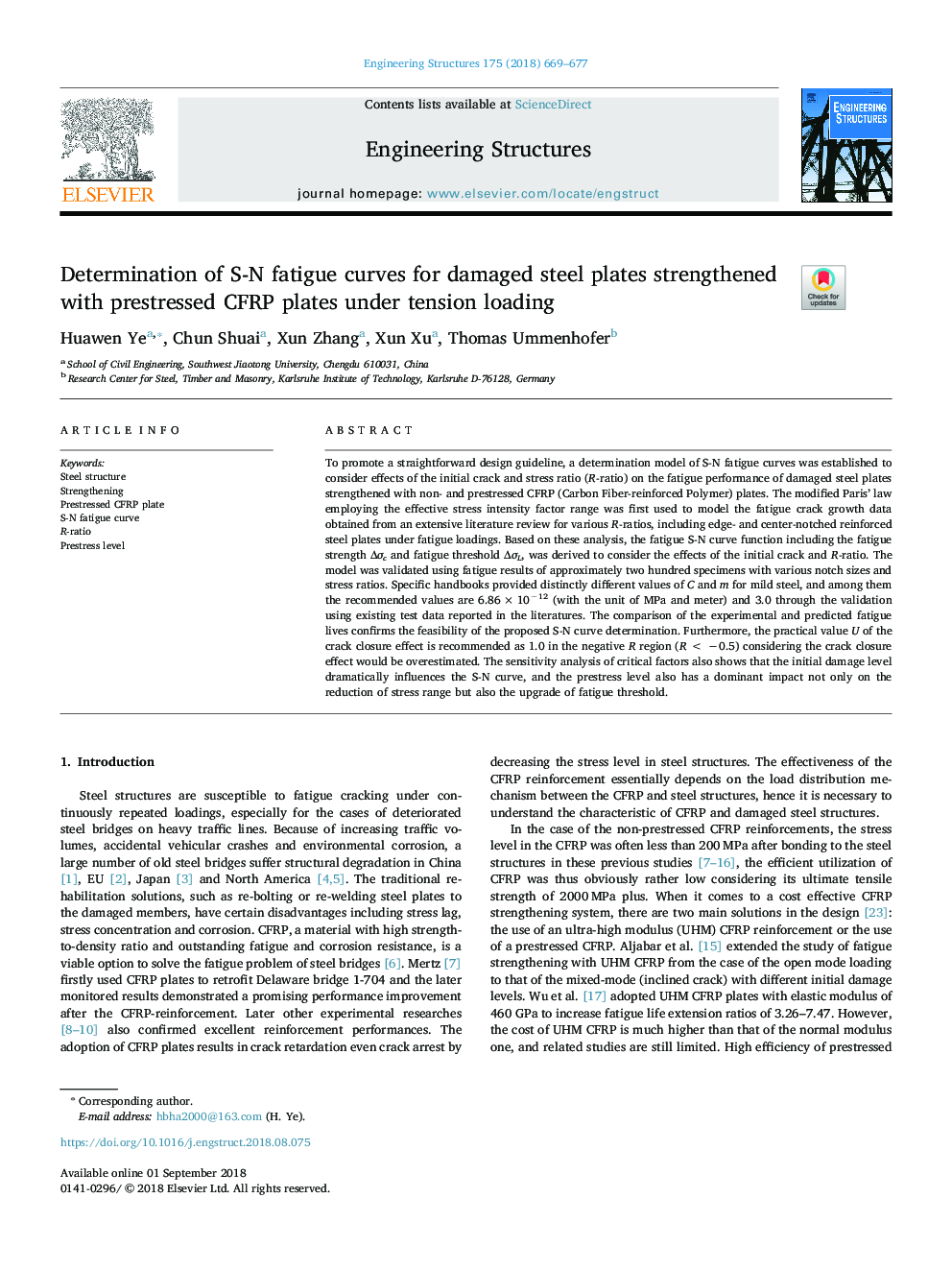| Article ID | Journal | Published Year | Pages | File Type |
|---|---|---|---|---|
| 10126919 | Engineering Structures | 2018 | 9 Pages |
Abstract
To promote a straightforward design guideline, a determination model of S-N fatigue curves was established to consider effects of the initial crack and stress ratio (R-ratio) on the fatigue performance of damaged steel plates strengthened with non- and prestressed CFRP (Carbon Fiber-reinforced Polymer) plates. The modified Paris' law employing the effective stress intensity factor range was first used to model the fatigue crack growth data obtained from an extensive literature review for various R-ratios, including edge- and center-notched reinforced steel plates under fatigue loadings. Based on these analysis, the fatigue S-N curve function including the fatigue strength ÎÏc and fatigue threshold ÎÏL, was derived to consider the effects of the initial crack and R-ratio. The model was validated using fatigue results of approximately two hundred specimens with various notch sizes and stress ratios. Specific handbooks provided distinctly different values of C and m for mild steel, and among them the recommended values are 6.86â¯Ãâ¯10â12 (with the unit of MPa and meter) and 3.0 through the validation using existing test data reported in the literatures. The comparison of the experimental and predicted fatigue lives confirms the feasibility of the proposed S-N curve determination. Furthermore, the practical value U of the crack closure effect is recommended as 1.0 in the negative R region (Râ¯<â¯â0.5) considering the crack closure effect would be overestimated. The sensitivity analysis of critical factors also shows that the initial damage level dramatically influences the S-N curve, and the prestress level also has a dominant impact not only on the reduction of stress range but also the upgrade of fatigue threshold.
Keywords
Related Topics
Physical Sciences and Engineering
Earth and Planetary Sciences
Geotechnical Engineering and Engineering Geology
Authors
Huawen Ye, Chun Shuai, Xun Zhang, Xun Xu, Thomas Ummenhofer,
